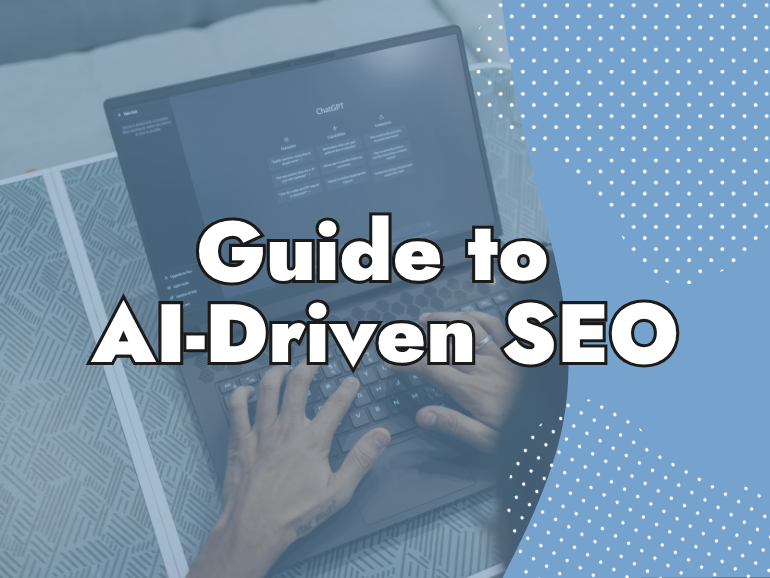Top Hacks For Improving Your Blog
Are you wondering how to improve blog traffic? Long-form writing is usually synonymous with Linkedin and Twitter in the form of blogging. While a casual yet quasi-professional method of documentation, blogging still possesses the power to reel-in audiences while simultaneously providing informative and entertaining content. Much like website design, blogging relies on the placement of…
Written by Angela
Last updated February 28, 2025 • First published July 20, 2020

Are you wondering how to improve blog traffic?
Long-form writing is usually synonymous with Linkedin and Twitter in the form of blogging. While a casual yet quasi-professional method of documentation, blogging still possesses the power to reel-in audiences while simultaneously providing informative and entertaining content.
Much like website design, blogging relies on the placement of imagery, title, sub-headings, font shape and size, and hyperlinks in order to maximize its potential growth and ensure that the content remains relevant, valuable, and timeless.
In this post we look at how to improve blog traffic and provide a comprehensive guide to blogging for traffic and for the search engines.
Boosting Blog Traffic
Why blogging is said to be crucial to the success and longevity of marketers due to the percentage of investment return, as noted by esteemed U.S. developer, Hubspot. So what are some tips and tricks on how to improve blog traffic?
Catchy Headlines:
According to Copyblogger, eight out of ten people will read headline copy and only two out of ten will read the rest of the article. Therefore, it’s wise to write catchy, magnetic headlines that also maintain the integrity of articles’ content.
Dividing opinion of the reader is one common trait used by news publications, and whether anyone likes it or not, there’s no argument that a polarizing headline usually delivers.
LIKE WHAT YOU’RE READING?
If these articles are helpful,
imagine what our team
can do for you!


More Traffic. Leads. Business.
I want to show you how SEO can grow your business in ways you haven’t seen before.
More Traffic. Leads. Growth.

I want to show you how SEO can grow your business in ways you haven’t seen before.
Long-form over Short-form:
Surely not! But it’s true. Longer content (2000-3000 words) means more opportunities for SEO, and subsequently better conversion rates. This is because they’re good for organically attracting natural backlinks. Readers can pull mass information from a long-form post (hyperlinks), and their repost quality is endless. With regards to the actual content, an estimated 4% of visitors will read it all the way through, therefore the other 96% need nurturing by giving them exactly what they’re looking for.
Pleasing the Audience:
Giving your audience what they want – this is how to improve blog traffic consistently. Provide the information that audiences feel they need and can get from only one source…you.
Patel’s “7 Proven Strategies to Increase your Blogs Traffic by 206%” suggests using a three-pronged model to entice audiences to a website, and ultimately purchasing a service or product. These are Awareness, Consideration, and Purchase.
Awareness:
Giving the audience a reason to need an organization, without telling them why they need them.
Consideration:
This is where the company will turn the curious party into a potential lead. Information through a free e-book, webinar, or a short course offers the visitor a good chance of becoming consumers.
Decision:
This is the hook that will turn the lead into a consumer – therefore specific details regarding pricing, trial periods, etc need to be provided.
Include Video:
With Generation Z seemingly showing less and less interest in paying attention for more than 15 seconds, and the already-dwindling attention span of millennials, it’s a good idea to post short videos. They can be tutorials or information packages, especially videos with emotional overtures that motivate visitors to take further action or invest in the compelling theme.
Retaining Visitors:
Bullas’ article “57 Ways to Boost your Blog Traffic” highlights the importance of first and foremost, building an email list (Bullas, 2020). He personally has a pop-up appear upon clicking on his blog page, which can be – personally, extremely annoying. However, Forbes lists him as among the top 50 online marketing experts so he must know a thing or two. His strategies regarding how to improve blog traffic elude to gaining large groups of followers on social media (Twitter, Facebook) thereby creating a following and sharing content on a more efficient platform than mass email (see Mailchimp).
Step-by-Step Guide to Building a Large Following:
- Link the blog URL to social media (Twitter, Facebook, LinkedIn)
- Share the blog posts on social media
- Host a webinar (networking with viewers)
- Provide an incentive for people to subscribe (i.e. free ebook with every new subscription)
- Obtain testimonials from other influencers with a strong social media presence
- Optimize search engines by using an SEO plug-in, such as WordPress
- Maintain a presence in the blogging community, by way of cross-promotion or just commenting (positive) on other blogs’ posts
- Ensure the blog is mobile user-friendly
- Create controversy – albeit don’t go overboard
- Utilize personal images – so users can put a face to the page
- Embrace multimedia
Once there is a core group of consumers ready to buy-in to a concept, the next step is to set-up an SEO strategy that will ensure the organization will aim to meet its conversion rate objectives. In order to do so it’s recommended to use a target keyword in each post. This will both increase the speed of SEO as well as utilizing the full potential of Organic SEO.
What is Organic SEO?
Organic SEO is the process where small sub-strategies – such as keyword research and link-building, help a website rank at the top of organic, unpaid search engine results pages.
How does Organic SEO work?
In order to provide Google (the largest search engine portal globally) with the tools necessary to rank amongst the top websites, Organic SEO exists to cultivate a website heavy with groundbreaking content and platforms to showcase such content (as mentioned earlier with video tutorials, multimedia channels i.e. Snapchat, TikTok).
Why is Organic SEO Important?
As mentioned earlier, the percentile that fail to click past the first post is high which hinders low ranking pages even more than it would a high ranking page. On top of that not only will businesses fail to generate sales, they will also lose revenue.
According to WebFX, Organic traffic captures over 40% of revenue, while search engines supply a rate eight times higher than standard marketing techniques.
SEO – Best Strategy for How to Improve Blog Traffic
In order to utilize keywords for each blog post, it’s imperative to do the appropriate keyword research. The following tools are rated as the best to identify invaluable keywords.
- Google Adwords Keywords Tool
Google Ads offers a Keyword Planner which shows the latest search engine trends related to all genres. Google will also provide an estimate for each keyword so that each organization can plan their advertising budget.
- Keywordtool.io
Keyword Tool prides itself on being an alternative to Google AdWords and supports this by being 99.99% more reliable than it’s competitors. Keyword Tool is a free tool that doesn’t require a sign-up account and generates up to 750 long-tail keyword suggestions for every search item. Keyword Tool uses Google Autocomplete to generate long-form keywords. G.A. finds information using search predictions, which are based off of similarity to what the organization in question are looking for.
- Semrush.com
With Semrush, companies can track daily rankings, analyze competitors’ SEO strategies, and obtain SEO ideas for traffic maximization purposes. Semrush focuses on “driving more sales” while priding itself on expanding GEO database, industry-specific database, and a niche marketing report. Semrush also analyzes competitors’ traffic and keyword strategies, ads, content, and social media.
Keyword Placement Helps to Improve Blog Traffic:
Once the keywords have been obtained, it’s important to take advantage of them properly. This includes correct placing in order to maximize the impact on the search engine portal. In her article “6 Ways to Optimize your Blog Posts for SEO” author Kelly Mango suggests including keywords in the following places:
- Title
- Headings and Subheadings
- Introductory Sentences
- Concluding Paragraphs
- Anchor Text (hyperlinks to other relevant pages on the website)
- Title Tags and Meta Descriptions
Mango also highlights the importance of optimizing images by including keywords under the ‘file heading.
BackLinks:
While a number of marketing experts have given their take on the best strategies for improving blog SEO, Google’s input for maximum results are building backlinks. They suggest this in order to be taken into consideration for a blog’s search engine position.
Sharing FREE Content:
As mentioned above, free content is always a cool incentive and a savvy strategy for bringing in new subscribers. As opposed to supplying information with the idea to gain something in return, provide free useful information which could also be content from a third-party or a post with no option to subscribe. This lessens the pressure on readers to take action, and increases their chances of desiring to take the next step.
Crawl Space:
As Kim said in his article, “5 Ways Blogging Helps with SEO + 5 Bonus Blogging Seo Tips,” the author claims “blogging increases your ‘crawl space’ as the more pages you have on your website, the more places search engines will have to crawl and index” (Kim, 2018). The author’s claim takes two directions; search engines are given greater comprehension into the workings of the website, and more content results in a greater utilization of keywords.
User-Friendly URL:
Kim also points out what other marketers are saying in that the URL of the website needs to be unique, optimized, and includes the most relevant keywords with regards to the blogs’ content.
Quality AND Quantity:
While the famous saying of “quality over quantity” absolutely applies, it needs to be released at a steady rate ensuring the website stays relevant, fresh, and enticing. In her article, “Blog SEO: How to Search Engine Optimize your Blog Content” author Lindsay Kolowich claims that continually publishing new information will result in better long-term ranking and will generate leads in the long run (Kolowich, 2020). Kolowich suggests publishing ‘evergreen content’ as it is sustainable.
What is Evergreen Content?
You can improve blog traffic with Evergreen Content, which is SEO information that is fresh for readers and symbolizes perpetual life as it is grows over time, with its relevancy peaking in the long term.
Common traits of ‘evergreen content’ is:
- Lists
- Top Tips
- Instructional `how to’ tutorials
- Encyclopedia-esque Entries
- Product Reviews
- Videos
With regards to the top ideas of ‘evergreen content’ the following have been listed as ones with the most longevity:
- Love and Romance
- Food
- Finance / Saving Money
- Parenting
- Weight Loss
- Jobs and Careers
- Pet Care
As well as being timeless, ‘evergreen content’ also possesses value and high quality. Therefore, it’s necessary to aim for a substantial number of views when initially posted.
Canonical content sets the standard for an organization as it is in-depth, detailed, and the definitive piece of writing on said subject.
Step-by-Step Guide to Maintaining Evergreen Content:
- Identifying ‘evergreen content’
- Updating content
- Keep CTA’s fresh
- Ensure posts are all SEO
Identifying Evergreen Content:
In order to do this, the webmaster will have to consult Blog Analytics. Hubspot is a good example; the blogging tool is mobile optimized, SEO-ready, conversion driven, and distraction-free. This is great for improving blog traffic.
Updating Content:
Recent developments would require immediate attention with a dynamic spin in order to generate enough notoriety to elicit feedback and a following. Furthermore, any pre-existing information needs to be constantly updated in light of newer events. Updating older material is more beneficial than creating new material as the pre-existing article will already have generated SEO benefits.
Keeping CTA’s Fresh:
The ‘Call-to-Action’ or CTA is a piece of material intended to entice a consumer to take action (i.e. subscribe, make a purchase) and therefore need to be kept maintained and fresh.
CTA Module is a good example, as it is user friendly in that it makes replacing an old CTA design with a new one, efficiently.
Ensure Posts are SEO:
Should a post generate a high level of traffic, then it’s wise to include high-ranking keywords or keywords that are looking to be ranked higher in order to generate even more traffic.
What’s Next?
You’ll see that blogging isn’t as straight forward as it seems. There are numerous vital aspects to take into consideration with regards to generating traffic, and eliciting consumers to buy-into what you’re marketing. To carry-out further research into what YOU need to maximize your blogging potential, 1st on the List are here to provide top-notch SEO and are more than qualified to boost your online presence.
Contact 1st on the List TODAY
1st on the List is YOUR go-to SEO company and will put YOU number one.
If you still have questions about how to improve blog traffic or for more information on SEO, please call 1-877-563-0459 or email us at [email protected]. Our friends over at WhyStuffSucks.com have also written this great article on how to improve blog traffic.
Angela
Angela Tucker has maintained the role of Lead Technical Optimizer at 1st on the List since our company was founded in 1997. She has experienced every one of Google’s algorithm updates and has the ability to review a website on a micro-level to pinpoint all the areas that could potentially be causing ranking issues. Her specific areas of expertise include Site Speed Optimization, Knowledge Graph, and Schema Markup.
Don’t miss out – get newest posts straight to your inbox!
OTHER ARTICLES WE THINK YOU’LL ENJOY
Partner With Us. Get More Leads.
Stop trying to do it all on your own – reach out to our team and we can discuss marketing strategies that are best suited for your business!
[NO HASSLE, NO PRESSURE, NO WORRIES – JUST MEANINGFUL INSIGHTS]








